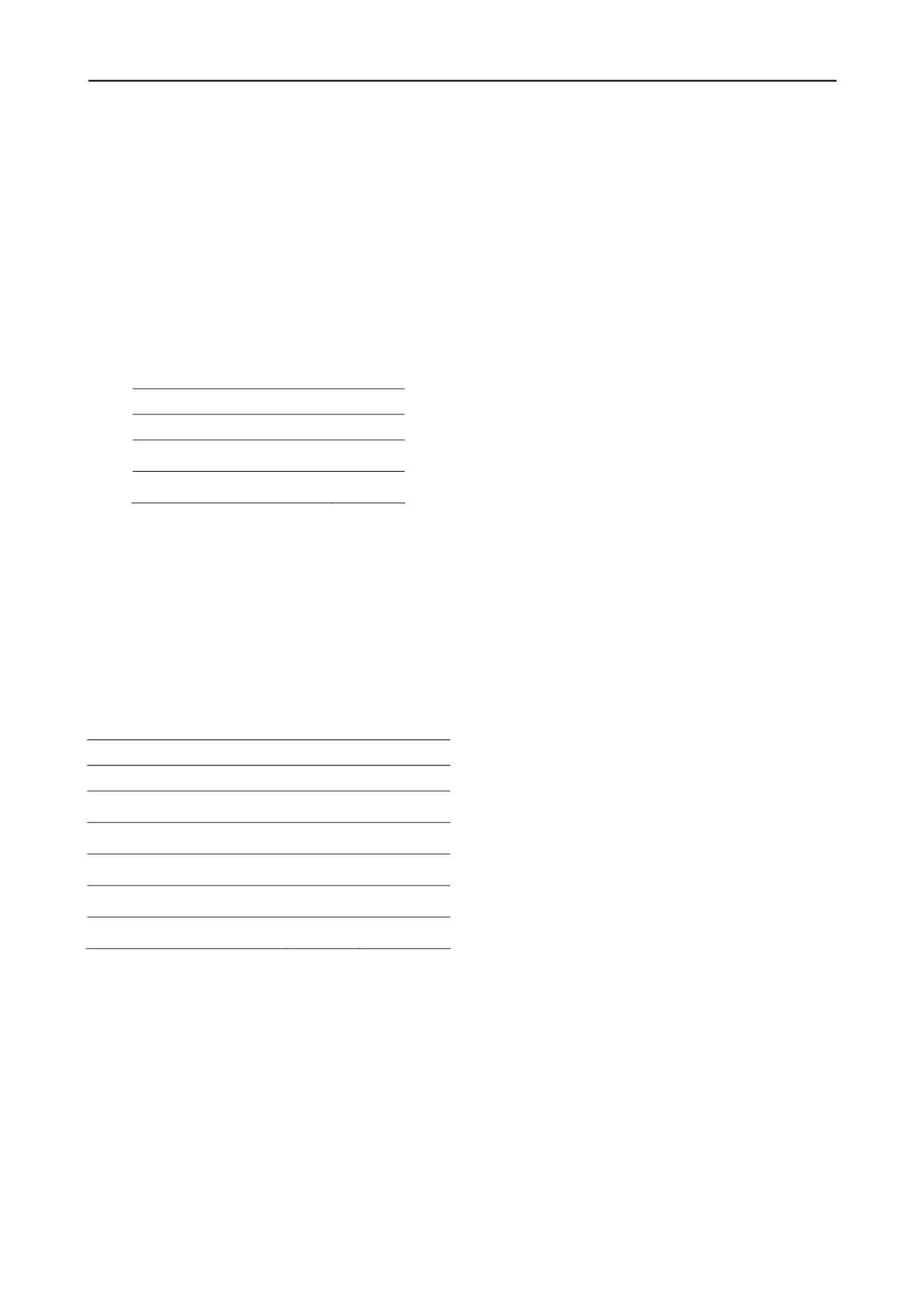
2944
Proceedings of the 18
th
International Conference on Soil Mechanics and Geotechnical Engineering, Paris 2013
permeability and coefficient of consolidation are higher than
those in the vertical direction.
In remolded young clay sediment, the permeability and
coefficient of consolidation are expected to be isotropic at low
stress levels, since the particles are arranged in a random way,
and there will be less fabric anisotropy (Clennell et al. 1999; Lai
and Olson 1998). However, similar observations of higher
c
h
and
k
h
values than
c
v
and
k
v
have been reported elsewhere for
remolded normally consolidated clays at low stress levels
(Sridharan et al. 1996; Robinson 2009). In Fig. 4(d), at the
moderate stress levels (50 – 60 kPa), the degree of anisotropy
lies in the range of 2 to 10. Based on the above observation, the
assumption of equal design
c
v
and
c
h
values for the recent
dredged mud fill may have to be reviewed.
Table 1: Anisotropy in permeability (
k
h
/k
v
)
σ
’
v
(kPa)
k
h
/k
v
50-100
2.0
100-200
3.5
200-300
1.1
For a vertical stress levels between 50 – 60 kPa,
c
v
values of
specimens V1, V2 and V3 varies between 0.1 – 0.2 m
2
/year (
Fig. 4). When compared to the design
c
v
obtained from in situ
tests, this is about 5 to 10 times smaller. It has been reported
that the laboratory tests generally result in lower
c
v
values than
in situ test values for southeast Queensland clays (Ameratunga
et al. 2010a).
The compression ratio (
CR
) and recompression ratio (
RR
)
are given in Table 2 for all the six specimens. The
CR
values of
specimens varies between 0.15- 0.36 and the
RR
values lie in
the range of 0.02-0.035. These values agree well with the design
CR
and
RR
values discussed in the previous section.
Table 2: Compression and recompression ratio of specimens (
CR
&
RR
)
Specimen
CR
RR
V1
0.228
0.031
R1
0.378
0.035
V2
0.153
0.019
R2
0.219
0.062
V3
0.204
0.029
R3
0.159
0.020
4 CONCLUSIONS
In the paper, a review of the Port of Brisbane land reclamation
works is given including the site conditions, design of vertical
drains and soil parameters. The sedimentation and consolidation
process of the dredged mud at the reclamation site was
simulated in the laboratory. Standard vertical and radial
consolidation tests were conducted on the reconstituted dredged
mud specimens.
The results show that a large degree of anisotropy can exist
between the horizontal and vertical coefficients of consolidation
and permeability in young clay sediment. The
c
v
values
obtained from the laboratory tests were found to be 5 to 10
times smaller than the field values. The compression ratio
CR
and recompression ratio
RR
are in good agreement with the
design values.
5 ACKNOWLEDGEMENTS
The writers would like to acknowledge Warren O'Donnell
(Senior Engineering Technician, Geomechanics Laboratory,
School of Engineering & Physical Sciences James Cook
University, Townsville, Australia) for his assistance in
conducting the laboratory experiments. The cash and in-kind
support provided by the Australian Research Council, Port of
Brisbane Pty Ltd and Coffey Geotechnics are gratefully
acknowledged.
6 REFERENCES
Alonso, E.E., Gens, A. and Lloret, A. 2000. Precompression design for
secondary settlement reduction. Goetechnique, 50(6), 645-656.
Ameratunga, J., De Bok, C., Boyle, P. and Berthier, D. 2010a. Ground
Improvement in Port of Brisbane (PoB) Clay- Case History,
ISSMGE Bulletin, 4(2), 28-54.
Ameratunga, J., Boyle, P., De Bok, C. and Bamunawita, C. 2010b. Port
of Brisbane (PoB) clay characteristics and use of wick drains to
improve deep soft clay deposits, The 17th Southeast Asian
Conference, Taipei, Taiwan, 2P-257, 1-4.
Clennell, M. B., Dewhurst, D. N., Brown, K. M., and Westbrook, G. K.
1999. Permeability anisotropy of consolidated clays. Special
Publications - Geological Society, London, 158(1), 79-96.
Lai, J. R., and Olson, R. E. 1998. Discussion on Consolidation behavior
of clayey soils under radial drainage by A. Sridharan, K. Prakash,
and S. R. Asha. Geotechnical Testing Journal, 21(1), 66-67.
McKinlay, D. G. 1961. A Laboratory study of rates of consolidation in
clays with particular reference to conditions of radial porewater
drainage. Proc.5th Int.Conference on Soil Mechanics and
Foundation Eng, Vol 1,Dunod,Paris.
Mesri, G. 1991. Prediction and performance of earth structures on soft
clay. Proc.1st Int. Conference on Coastal development,Yokohama,
Japan, Vol 2, G2.1-G2.16.
Robinson, R.G. 2009. Analysis of radial consolidation test data using a
log-log method. Geotechnical Testing Journal, 32(2), 119-125
Sridharan, A., Prakash, K., and Asha, S. R. 1996. Consolidation
behavior of clayey soils under radial drainage. Geotechnical
Testing Journal, 19(4), 421-431.
Wong, P.K. 2007. Preload design to reduce post construction creep
settlement. Soft soils and ground improvement workshop. Proc.
10th Australia New Zealand Conference on Geomechanics,
Brisbane, Australia, 23-31.
7 NOTATIONS
C
c
- Compression index
c
h
- Horizontal/ Radial coefficient of consolidation
CR - Compression ratio
C
r
- Recompression index
c
u
- Undrained shear strength
c
v
- Vertical coefficient of consolidation
C
αe
- Coefficient of secondary compression
e
0
- Initial void ratio
k
h
- Horizontal permeability
k
v
- Vertical permeability
LL - Liquid limit
LS - Linear shrinkage
NC - Normally consolidated
OC - Over consolidated
OCR Over consolidation ratio
PI - Plasticity index
PL - Plastic limit
RR - Recompression index
σ´
v
- Effective vertical stress
Ø
´
- Drained friction angle


